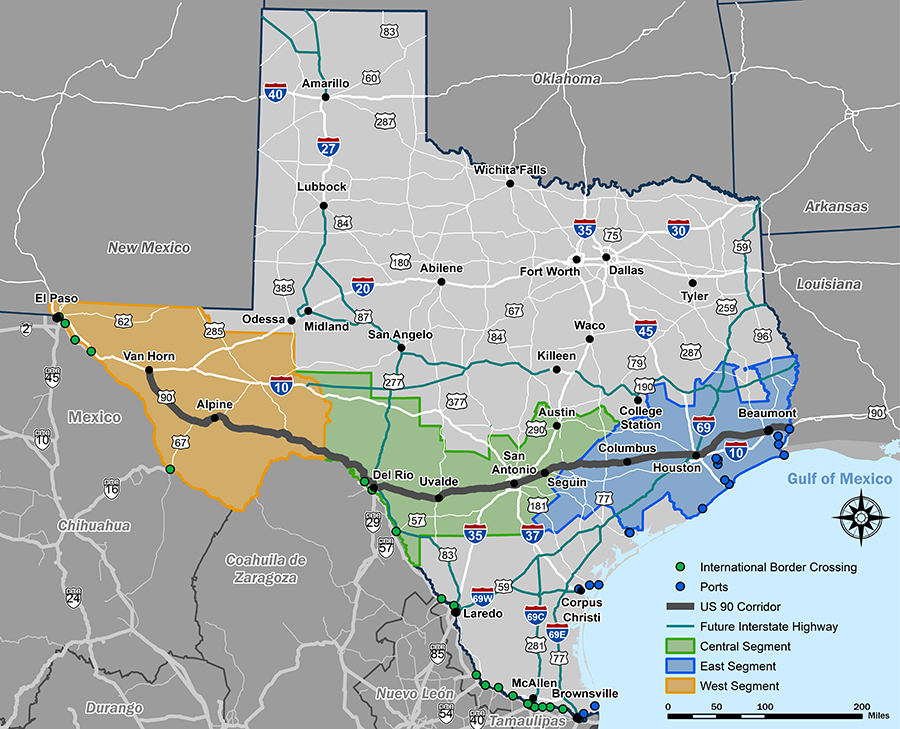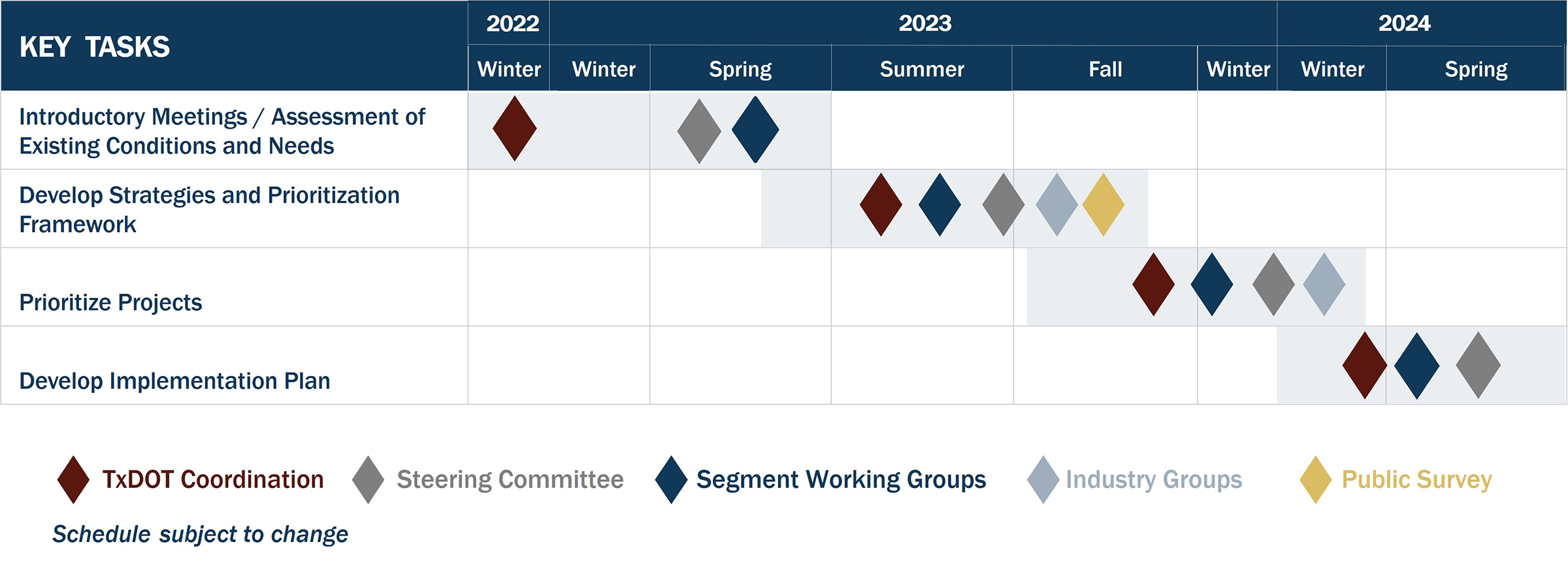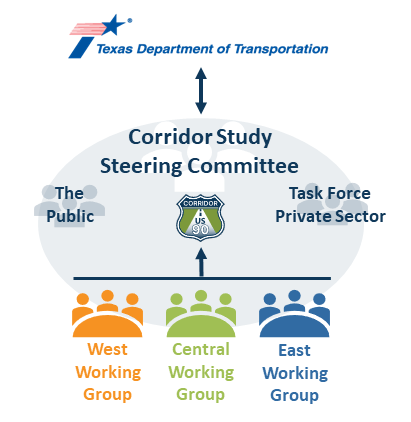Study overview
TxDOT works to deliver a safe, reliable, and integrated transportation system. The United States Highway 90 (US 90) Corridor Study was initiated by the TxDOT - Transportation Planning and Programming (TPP) Division as a long term, comprehensive analysis of the US 90 Corridor from a multimodal approach. The study includes the entire US 90 Corridor from the Interstate 10 (I-10) junction in Van Horn to the Louisiana state line, approximately 763 miles.
The US 90 corridor spans a series of unique roadway segments connecting the small towns and major metropolitan areas with the ports, international border crossings, airports, natural areas, and neighboring states by providing a pathway for continued economic prosperity. From functioning as a two-lane minor arterial to running concurrently with the 12-lane Katy Freeway (I-10),US 90 is a vital component of the TXDOT roadway network and freight network.
In keeping with population growth, increasing traffic, and the state’s booming economy, the US 90 Corridor Study will examine currently planned transportation projects, evaluate safety, and analyze reliability, connectivity, and mobility concerns. In addition, the study will identify multimodal needs and prioritize short-, medium-, and long-term improvements to promote movement of people and goods along the corridor.

Key considerations
The study will consider the following key elements to identify and prioritize proposed improvements along the corridor:
- Mobility and reliability
- Multimodal
- Resiliency
- Costs and funding
- Connectivity
- Safety
- Operations and emerging technology
- Freight
- Intermodal
- Asset preservation
Study approach
TxDOT will conduct technical analyses and engage local elected officials, regional organizations, industry and business representatives, members of the public, and other stakeholders throughout the study process from fall 2023 to winter 2024. The study will be conducted in phases with four rounds of stakeholder engagement meetings. The phases will evaluate existing conditions and assess needs, identify and prioritize improvements, and develop an implementation plan, as shown in the diagram.

Stakeholder and public engagement
Input collected from stakeholders, both public and private, throughout the study will be important to help TxDOT identify transportation needs and prioritize improvements to improve safety, connectivity, and mobility along the US 90 corridor.
Key stakeholders include:
- TxDOT district and division representatives
- A steering committee
- Three regional working groups
- West – I-10 junction in Van Horn to the Terrell/Val Verde County line
- Central – Terrell/Val Verde County line to the Caldwell/Gonzales County line
- East – Caldwell/Gonzales County line to the Texas/Louisiana state line
- Industry groups - the energy sector industry and trucking, freight, military groups, and economic development organizations
- Travelers and other members of the public
The public will have the opportunity to provide input throughout the development of the study.

| Title |
| Executive Summary |
| Final Report |
| Study Map (overview) |
| Public Survey Summary |
| Title |
|---|
| Fact Sheet |
| Title | Date |
|---|---|
| Steering Committee - First Meeting Summary | May 19, 2023 |
| West Working Group - First Meeting Summary | May 26, 2023 |
| Central Working Group - First Meeting Summary | June 2, 2023 |
| East Working Group - First Meeting Summary | June 1, 2023 |
| Title | Date |
|---|---|
| Steering Committee – Second Meeting Summary | Sept. 14, 2023 |
| West Working Group - Second Meeting Summary | Aug. 29, 2023 |
| Central Working Group - Second Meeting Summary | Aug. 30, 2023 |
| East Working Group - Second Meeting Summary | Aug. 24, 2023 |
| Title | Date |
|---|---|
| Steering Committee - Third Meeting Summary | May 2, 2024 |
| West Working Group - Third Meeting Summary | April 24, 2024 |
| Central Working Group - Third Meeting Summary | April 2, 2024 |
| East Working Group - Third Meeting Summary | April 4, 2024 |
| Title | Date |
| Steering Committee - Final Stakeholder Meeting | June 20, 2024 |